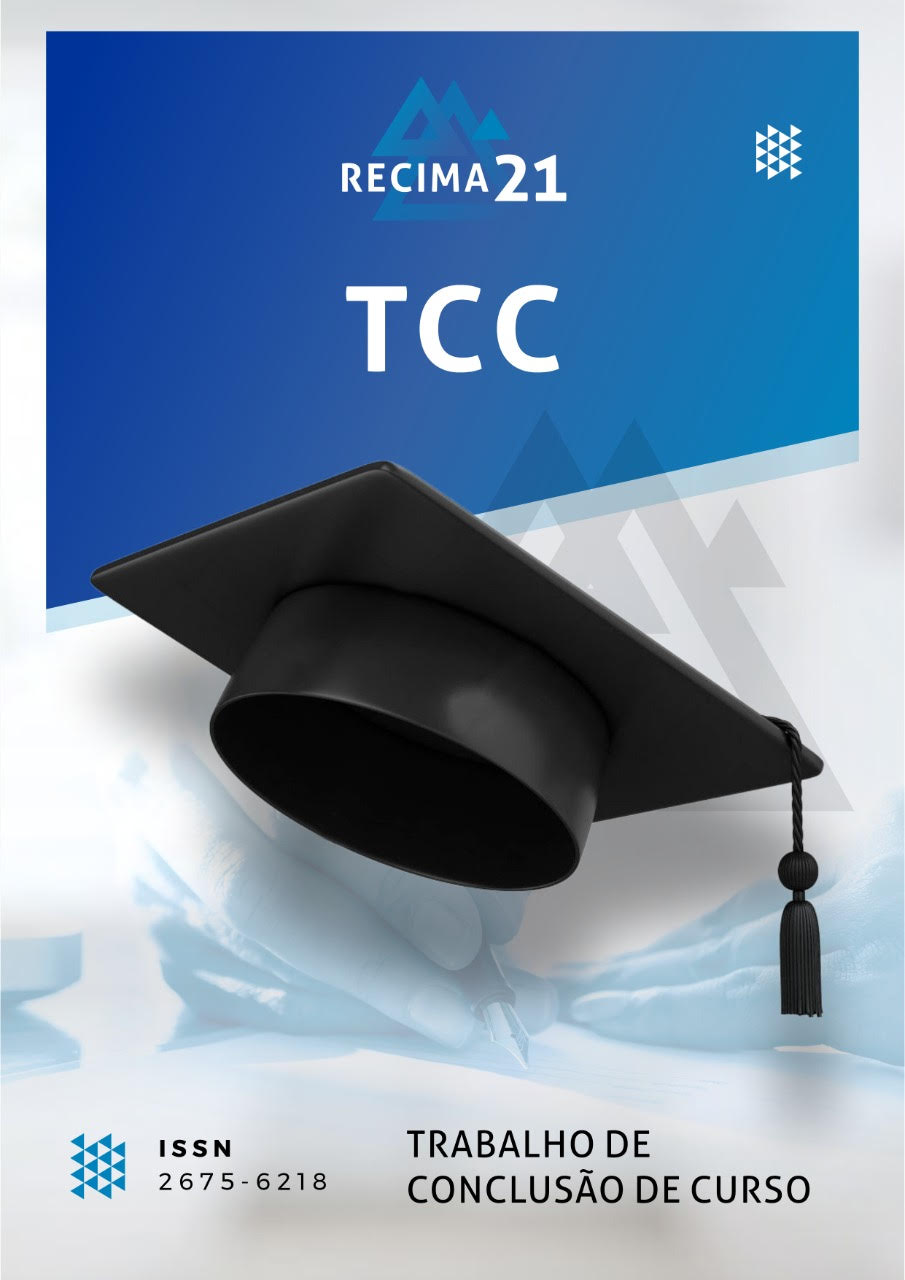ANÁLISE DOS EFEITOS DOS EXERCÍCIOS RESISTIDOS NA PREVENÇÃO E TRATAMENTO DA OSTEOARTRITE DE JOELHO EM IDOSOS: UMA REVISÃO SISTEMÁTICA
DOI:
https://doi.org/10.47820/recima21.v4i1.4166Palavras-chave:
Osteoartrite, Osteoartrite do Joelho, fisioterapia, reabilitaçãoResumo
A osteoartrite (OA) é uma doença degenerativa das articulações que afeta principalmente idosos, causando dor, limitação funcional e perda de qualidade de vida. Diversas abordagens de tratamento estão disponíveis, incluindo fisioterapia, intervenções cirúrgicas e terapias não farmacológicas. Objetivos: O objetivo geral é realizar uma revisão sistemática para avaliar a eficácia dos tratamentos para OA de joelho em idosos, buscando melhorar a qualidade de vida dos pacientes. Os objetivos específicos incluem analisar estudos sobre tratamentos disponíveis, avaliar a redução da dor, melhorar a funcionalidade, aumentar a força muscular, a qualidade de vida e a capacidade de equilíbrio e marcha dos idosos com OA de joelho. Métodos: A revisão sistemática abrangeu a pesquisa em fontes acadêmicas, como Pubmed, Scielo, PEDro, Medline e Science Direct. Resultados e Discussão: Diversas intervenções foram avaliadas, incluindo o uso de sapatos adequados, programas de reabilitação domiciliar, fisioterapia com exercícios terapêuticos e intervenções cirúrgicas, como a substituição total do joelho. A eficácia variou dependendo das estratégias e dos pacientes, mas em geral, várias intervenções mostraram-se promissoras na redução da dor e na melhoria da função. Conclusão: A OA de joelho é uma condição complexa, e a escolha do tratamento deve ser personalizada. Abordagens como o uso de sapatos adequados, programas de reabilitação domiciliar e fisioterapia com exercícios terapêuticos podem ser eficazes para muitos idosos. A substituição total do joelho é uma opção em casos graves. No entanto, é essencial uma abordagem individualizada e mais pesquisas para entender quais pacientes se beneficiariam mais de cada estratégia de tratamento.
Downloads
Referências
BARKER, K. L. Outpatient physiotherapy versus home-based rehabilitation for patients at risk of poor outcomes after knee arthroplasty: CORKA RCT. Health Tecnhnology Assessment, v. 24, n. 65, nov. 2020, p. 1-116.
CHAN, A. C. M. et al. Recovery of balance function among individuals with total knee arthroplasty: Comparison of responsiveness among four balance tests. Gait & Posture, [s. l.], v. 59, 2018, p. 267-271.
CHAWLA, L. et al. Functional outcome of patellar resurfacing vs non resurfacing in Total
Knee Arthoplasty in elderly: A prospective five year follow-up study. Journal of Arthroscopy and Joint Surgery, [s. l.], 2018.
CHOUDHARY, K. et al. Comparison between the effects of Maitland’s mobilization versus its combination with vastus medialis oblique neuromuscular stimulation on two scales (NPRS & WOMAC) in knee osteoarthritis patients. Indiaan Journal of Medical Research, v. 156, n. 1, jul 2022, p. 149-154.
CLODE, N. J.; PERRY, M. A.; WULFF, L. Does physiotherapy prehabilitation improve pre-surgical outcomes and influence patient expectations prior to knee and hip joint arthroplasty? International Journal of Orthopaedic and Trauma Nursing, [s. l.], v. 30, 2018, p. 14-19.
DEBBI, E. M. et al. A biomechanical foot-worn device improves total knee arthroplasty outcomes. The Journal of Arthoplasty, [s. l.], v. 34, n. 1, jan. 2018, p. 47-55.
GARCIA-MARIN, M. et al. Efficacy of Non-Invasive Radiofrequency-Based Diathermy in the Postoperative Phase of Knee Arthroplasty: A Double-Blind Randomized Clinical Trial. Journal of Clinical Medicine, [s. l.], v. 10, n. 8, 2021.
MOORE, A. J. et al. Therapeutic alliance facilitates adherence to physiotherapy-led exercise and physical activity for older adults with knee pain: a longitudinal qualitative study. Journal of Physioteraphy, [s. l.], 2019.
PATERSON, K. L. et al. Footwear for self-managing knee osteoarthritis symptoms: protocol for the Footstep randomised controlled trial. BMC Musculosket Discord, [s. l.], v. 19, n. 219, 2018.
SCHACHE, M. B.; MCCLELLAND, J. A.; WEBSTER, K. E. Incorporating hip abductor strengthening exercises into a rehabilitation program did not improve outcomes in people following total knee arthroplasty: a randomised trial. Journal of Physiotherapy, [s. l.], v. 65, 2019, p. 136-143.
SILVA, J. M. R. Efeitos de um programa educacional promovendo a prática regular de exercício físico sobre a capacidade física, funcional, qualidade de vida e nível de atividade física de indivíduos com osteoartrite de joelho durante 4 anos de seguimento. UNESP, Bauru, 2018.
SKOU, S. T. et al. Total knee replacement treatment and non-surgical treatment of knee osteoarthritis: 2-year outcome from two parallel randomized controlled trials. Osteoarthritis and Cartilage, [s. l.], v. 26, n. 9, 2018, p. 1170-1180.
STEFANNI, G. L. Comparativo do ganho de força de quadríceps entre oclusão vascular parcial e fortalecimento convencional em pacientes com osteoartrite de joelho. Revista Multidisciplinar da Saúde (RMS), [s. l.], v.04, n.04, ano 2022, p. 47-58
YAMADA, E. F. et al. Efeito dos exercícios de fortalecimento, de marcha e de equilíbrio no tratamento de osteoartrite de joelho. Revista Brasileira de Ciência e Movimento, [s. l], v. 26, n. 3, 2018, p. 5-13
Downloads
Publicado
Edição
Seção
Categorias
Licença
Copyright (c) 2023 RECIMA21 - Revista Científica Multidisciplinar - ISSN 2675-6218

Este trabalho está licenciado sob uma licença Creative Commons Attribution 4.0 International License.
Os direitos autorais dos artigos/resenhas/TCCs publicados pertecem à revista RECIMA21, e seguem o padrão Creative Commons (CC BY 4.0), permitindo a cópia ou reprodução, desde que cite a fonte e respeite os direitos dos autores e contenham menção aos mesmos nos créditos. Toda e qualquer obra publicada na revista, seu conteúdo é de responsabilidade dos autores, cabendo a RECIMA21 apenas ser o veículo de divulgação, seguindo os padrões nacionais e internacionais de publicação.













